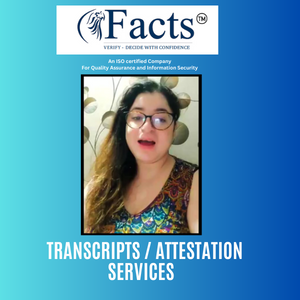For many students, navigating the complex landscape of financial aid can be a daunting task. However, with the Free Application for Federal Student Aid (FAFSA), accessing crucial financial assistance for college has never been more accessible. Whether you’re a high school senior preparing for your first year of college or a returning student seeking assistance for the upcoming academic year, understanding the FAFSA application process is essential. Here’s everything you need to know to successfully navigate the FAFSA application:
What is FAFSA?
The Free Application for Federal Student Aid (FAFSA) is a form used by colleges, universities, and other educational institutions to determine eligibility for federal, state, and institutional financial aid programs. These programs include grants, scholarships, work-study opportunities, and federal student loans.
Who Should Apply?
Every student pursuing higher education should complete the FAFSA, regardless of financial need. Many financial aid programs, including grants and scholarships, have limited funding and are awarded on a first-come, first-served basis, so it’s essential to submit your FAFSA as early as possible.
Key Steps to Completing the FAFSA:
- Gather Required Documents: Before starting your FAFSA application, gather important documents such as your Social Security number, driver’s license, federal tax returns, W-2 forms, and records of untaxed income.
- Create an FSA ID: Both students and parents need to create a Federal Student Aid (FSA) ID to access and sign the FAFSA electronically. The FSA ID serves as your electronic signature and grants access to federal student aid websites.
- Fill Out the Application: Complete the FAFSA online at fafsa.gov. The application will ask for personal and financial information about you and your family, including income, assets, household size, and dependency status.
- List Colleges and Universities: On the FAFSA, you can select up to ten colleges or universities to receive your financial aid information. Make sure to include all the schools you’re considering, even if you haven’t applied or been accepted yet.
- Submit and Review: After completing the FAFSA, review your information carefully for accuracy and submit your application. You’ll receive a confirmation email once your FAFSA has been processed.
What Happens Next?
After submitting your FAFSA, you’ll receive a Student Aid Report (SAR) summarizing the information you provided and indicating your Expected Family Contribution (EFC). Colleges and universities will use your EFC to determine your eligibility for financial aid and create a financial aid package tailored to your needs.
Additional Tips:
- File Early: The FAFSA opens on October 1st each year, and some financial aid programs have limited funds. To maximize your chances of receiving aid, submit your FAFSA as soon as possible after it becomes available.
- Renew Annually: You must complete the FAFSA each year you plan to attend college to remain eligible for financial aid. Be sure to update your information and submit your application by the deadline.
- Seek Assistance: If you have questions or need assistance completing the FAFSA, reach out to your school’s financial aid office or visit the Federal Student Aid website for resources and support.
Navigating the FAFSA application process may seem overwhelming at first, but with careful preparation and attention to detail, you can successfully unlock the financial assistance you need to pursue your educational goals. By understanding the key steps involved and seeking support when needed, you’ll be well-equipped to navigate the FAFSA with confidence and ease.
Sponsored
FACTS Transcripts
Apply for a University document anywhere
https://www.factstranscript.com
Quick Transcripts for popular Universities, check your University name now and get started. We help you to get your transcript application online which is accepted for use of IRCC.
No DD, NO Paperwork. 100% Authentic, Reliable.
FACTS Transcripts Charges · Reviews · Assam Universities · Home · Know your University









